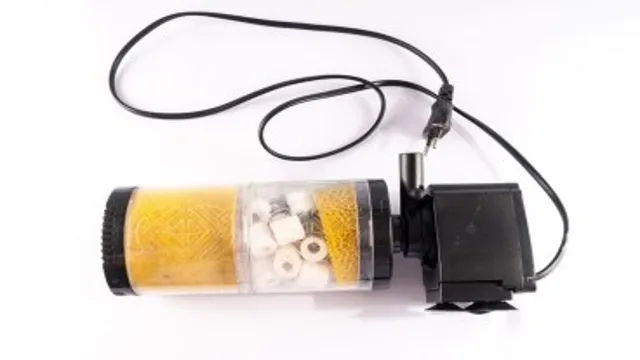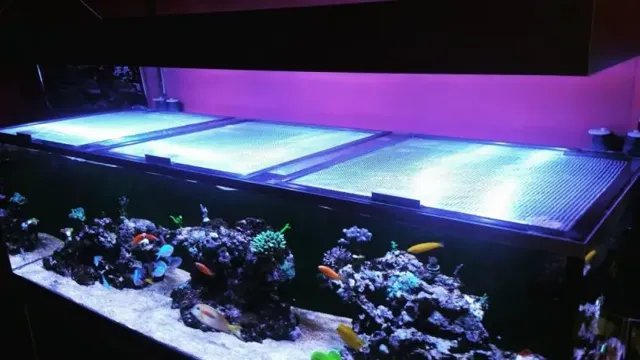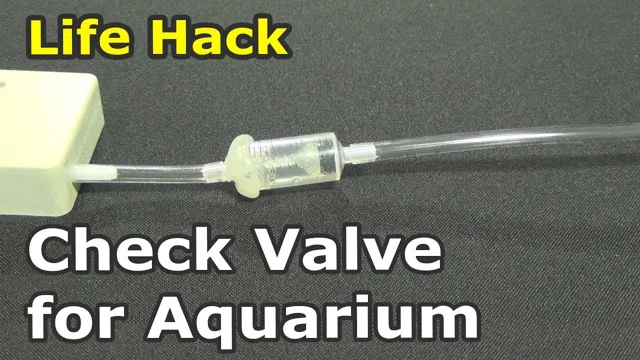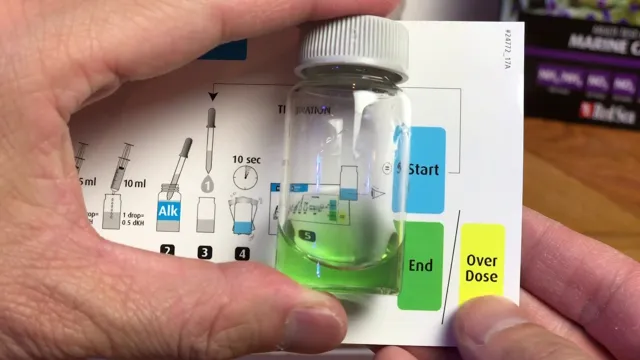Maintaining an aquarium filter is essential for ensuring the health and longevity of your aquatic pets. It’s a big responsibility, but don’t fret, with this comprehensive guide you’ll be able to keep your aquarium filter running smoothly. Just like a car engine needs regular oil changes, your aquarium filter needs to be maintained with regular cleaning and replacement of its parts.
But, where do you start? How often should you clean or replace your filter? What are the best products to use? These are just a few of the questions we will answer, so you can provide the best environment for your fish to thrive. So, let’s dive in and explore everything you need to know about maintaining your aquarium filter!
Why Proper Maintenance is Important
If you have an aquarium, keeping your fish healthy and happy is a top priority. An aquarium filter is essential for maintaining a healthy environment for your aquatic pets. But to keep your filter working properly, you need to maintain it regularly.
One way to do this is by cleaning the filter media. This involves removing the media from the filter housing and washing it with tank water, not tap water, which can kill beneficial bacteria that help keep the water clean. You also need to check the filter for any clogs or debris that could cause it to malfunction.
Another important step is to replace the filter media on a regular schedule, as recommended by the manufacturer. Proper maintenance not only ensures a healthy environment for your fish but also can extend the life of your aquarium filter. So, make sure to adopt a regular maintenance routine for your aquarium filter, including cleaning and replacing the media as needed.
Ensuring Water Quality and Health of Fish
Proper maintenance is vital for ensuring water quality and the health of fish that reside in it. Neglecting water maintenance can lead to a variety of issues that can negatively impact aquatic life. One of the most common problems is high levels of ammonia, which can cause stress and even death in fish.
Additionally, a lack of proper filtration and water changes can lead to the buildup of harmful bacteria and parasites that can spread and cause disease. It’s critical to test the water regularly and keep pH levels stable to prevent these issues from occurring. Think of it like cleaning your own home.
When you neglect to clean up or take care of things like mold or pests, your living environment can quickly become unhealthy and unpleasant. The same goes for fish and their habitat. By maintaining the water quality and water conditions, you’re creating a safe and comfortable home for your aquatic pets.
Additionally, proper water maintenance can extend the life of your aquarium equipment, such as filters and pumps, which saves you money in the long run. By caring for your fish and their environment, you’ll create a healthy and thriving underwater ecosystem that everyone can enjoy.
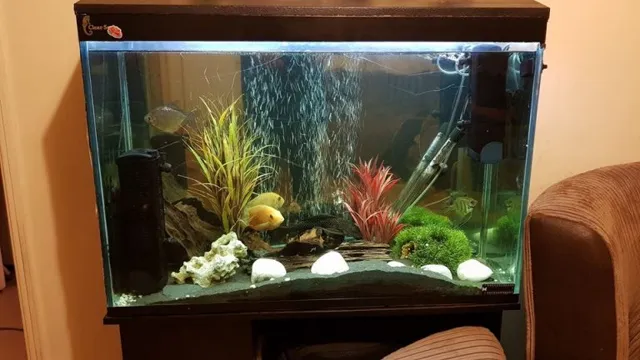
Prolonging the Life and Efficiency of the Filter
Proper maintenance of filters is crucial for prolonging their lifespan and ensuring their efficiency. One of the key reasons why this is important is that clogged filters can restrict airflow, which can cause the HVAC system to work much harder than necessary. By keeping filters clean and properly maintained, you can save energy and reduce costs.
Additionally, dirty filters can be a breeding ground for bacteria, which can negatively impact indoor air quality and cause health problems. Not only does cleaning or replacing filters regularly improve air quality, it also helps to prevent breakdowns and malfunctions in your HVAC system. So, remember to schedule routine maintenance for your filters, and enjoy a healthier and more efficient living space as a result.
How Often Should You Clean Your Filter
Maintaining an aquarium filter is essential for keeping your fish healthy and your water clean. One common question that arises is how often you should clean your filter. The answer depends largely on the type of filter you have and the size of your aquarium.
Generally speaking, a good rule of thumb is to clean your filter once a month, or every two weeks for larger tanks. However, if you notice that your water is becoming cloudy or your filter is working less effectively, it may be time to clean it sooner. It’s important to note that you should never clean your filter too often, as this can disrupt the beneficial bacteria that live inside it and remove essential nutrients from your water.
By maintaining a regular cleaning schedule and monitoring your tank closely, you can ensure that your aquarium runs smoothly and your fish stay happy and healthy.
Factors Affecting Cleaning Frequency
When it comes to cleaning your filter, there are a variety of factors that can affect how often you need to do it. The most important of these factors is the usage of your filter. If your filter is being used frequently, then it will need to be cleaned more often.
Another key factor is the size of your filter. If you have a larger filter, then it will generally need to be cleaned less often than a smaller filter. Other factors that can affect cleaning frequency include the type of filter you have, the environment in which your filter is located, and the quality of the air in your home or business.
To determine how often you should clean your filter, it’s a good idea to consult the manufacturer’s instructions or to speak with a professional HVAC technician. With proper maintenance, you can help ensure that your filter is working effectively and efficiently, so that you can enjoy clean and healthy air in your space. Don’t overlook the importance of regular filter maintenance, as it can help prolong the life of your HVAC system and improve the overall air quality of your environment.
Signs that Your Filter Needs Cleaning
When it comes to maintaining your pool’s cleanliness, the filter shouldn’t be overlooked. So, how often should you clean your filter? Well, it depends on certain factors such as the size of your pool, filter type, and pool usage. A general rule of thumb is to clean your filter at least once a month during the swimming season. (See Also: How to Lower Nitrite in My Aquarium: The Ultimate Guide to a Healthier Tank)
However, if you have heavy pool usage or an abundance of debris, you may need to clean it more frequently. You can also tell if your filter needs cleaning based on some clear signs. Look out for decreased water flow, cloudy water, or visible debris in the pool.
If you notice any of these issues, it’s time to check and clean your filter. Keeping your filter clean will not only ensure a sparkling pool but will also prolong the life of your filter.
Steps for Cleaning Your Filter
Maintaining a clean aquarium filter is crucial for the health and wellbeing of your aquatic pets. To ensure optimal performance and longevity of your filter, regular cleaning is necessary. Here are the steps you can follow to clean your aquarium filter.
First, unplug the filter and remove it from the tank. Second, remove the media from the filter and rinse it with water to remove any debris or waste particles. Third, use a soft-bristled brush or sponge to clean the filter housing and impeller.
Fourth, rinse everything thoroughly with clean water and reassemble the filter. Finally, plug the filter back in and give it a few minutes to restart before turning it on. By regularly cleaning your aquarium filter, you can improve water quality and create a healthy environment for your aquatic pets to thrive in.
Step 1: Turn Off the Filter and Unplug the Power
When it comes to cleaning your filter, there are a few simple steps you can follow to ensure its longevity and effectiveness. Step one is to turn off the filter and unplug the power. This is a crucial step as it ensures that you are not at risk of being electrocuted.
Once you have turned off the filter and unplugged it from the power source, remove the filter from its location. Depending on the type of filter you have, this could be as easy as lifting it out or may require a bit more effort. Once the filter is removed, give it a once-over to assess the level of dirt and debris.
Cleaning your filter regularly is essential as it helps to prolong the life of the filter and ensures it runs as efficiently as possible. By following these simple steps, you can be confident that your filter will continue to function at its best, and your aquarium or pool will always be crystal clear.
Step 2: Disassemble the Filter
Once you have turned off your pool’s filtration system and located the filter, it’s time to disassemble it so that you can start cleaning it effectively. First, remove the pressure gauge and the air release valve to release any built-up pressure within the filter. Next, use a wrench or pliers to unscrew the lock ring and lid.
Make sure to keep the filter’s internal parts in their respective positions so that you can reassemble them easily later. Once you have disassembled the filter, you can proceed to clean it using a hose or a specialized filter cleaner and a brush. Cleaning your pool filter regularly will ensure that your pool water stays clear and free from any contaminants, and it will make sure that your pool system works at maximum efficiency.
So, disassemble your filter now, and let’s get cleaning!
Step 3: Clean the Filter Media
After removing the filter media from your filter, it’s time to give it a good cleaning. First, give it a rinse with tap water to remove any loose debris. Then, fill a bucket with aquarium water and add a small amount of dechlorinator.
Soak the filter media in the bucket for a few hours, making sure to keep it submerged. This will help to remove any built-up sediment and maintain the beneficial bacteria that live in the media. After soaking, gently squeeze the media to remove any excess water, being careful not to damage or break it.
Finally, place the cleaned filter media back into your filter and you’re good to go! Regularly cleaning your filter media is important for maintaining a healthy and thriving aquarium environment. By keeping your filter clean, you’ll ensure that your fish and other aquatic animals have the clean and oxygen-rich water they need to thrive.
Step 4: Clean Other Filter Components
Now that you’ve cleaned your filter’s main components, it’s time to tackle the other parts. This includes the filter cover, baskets, and any other accessories. To clean these components, begin by removing them from the filter housing and giving them a good rinse with a hose or sink sprayer.
Use a soft-bristled brush to scrub away any debris or buildup, taking care not to damage any delicate parts. If you notice any cracks or damage, it may be time to replace these pieces. Once everything has been scrubbed and rinsed thoroughly, it’s time to reassemble the filter and replace it in your pool or spa. (See Also: How to Breed Aquarium Bat Rays at Home: A Comprehensive Guide)
By taking the time to clean all of the filter components, you’ll ensure that your filter is working at peak performance, keeping your water clean and clear for all of your aquatic activities.
Step 5: Reassemble the Filter and Restart the System
Once you have completed the previous steps, it’s time to reassemble your filter and get your system back up and running. Start by replacing the drain plug and reattaching any disconnected hoses. Then, put the cleaned filter elements back into the filter housing.
Make sure to replace any gaskets or O-rings that were removed during the cleaning process. Double-check that all connections are secure and tightened properly. Now, all that’s left to do is turn on your pool pump and watch as your clean and properly functioning filter begins to do its job.
Remember to regularly clean your filter to maintain optimal performance and ensure a sparkling and healthy pool.
Additional Tips for Maintaining Your Aquarium Filter
When it comes to maintaining your aquarium filter, there are a few additional tips that can help keep your tank clean and your fish healthy. One key tip is to regularly clean the filter media, which can become clogged with debris over time and reduce the effectiveness of the filter. It’s also important to perform regular water changes to keep the overall water quality high and prevent the buildup of harmful chemicals and pollutants.
Additionally, consider adding some beneficial bacteria to your filter system to help break down waste and keep the water balanced. Finally, make sure to keep an eye on your fish and monitor their behavior for any signs of illness or stress, as this can be a key indicator of problems with the filter system. With these tips, you can maintain a healthy and thriving aquarium for your aquatic pets.
Make Sure the Filter is Properly Sized and Installed
When it comes to maintaining your aquarium filter, ensuring it is properly sized and installed is crucial. Not only will it increase the efficiency of your filter, but it will also ensure that your aquatic pets have a clean and healthy environment to thrive in. One important tip is to make sure that the filter is appropriately sized for your tank.
If it’s too small, it won’t be able to handle the amount of waste produced, and if it’s too large, it can create a strong current that can stress out your fish. Additionally, be sure to follow the instructions carefully when installing your filter. Improper installation can lead to leaks, poor performance, and potential damage to your tank.
By taking the time to properly size and install your filter, you’ll be providing your fish with a safe and healthy home.
Avoid Overfeeding and Overstocking
When it comes to maintaining your aquarium filter, there are a few things you can do to ensure it runs smoothly. One important aspect to consider is avoiding overfeeding and overstocking. These two factors can greatly impact the health of your fish and the effectiveness of your filter.
Overfeeding can cause excess waste in the tank, which can clog up your filter and lead to poor water quality. Similarly, overstocking your aquarium can result in too much waste being produced, again leading to filter clogs and decreased water quality. To avoid these issues, be mindful of how much you feed your fish and how many you have in your tank.
Keep a schedule and stick to it to ensure your aquarium stays balanced and your filter can do its job effectively.
Perform Regular Water Changes and Testing
Maintaining your aquarium filter can seem overwhelming, but there are simple steps you can take to ensure your fish and aquatic plants stay healthy. One of the most important habits to build is performing regular water changes and testing. Test the water in your tank weekly to monitor pH levels, ammonia, nitrate, and nitrite levels.
An imbalance in these levels can cause harm to your fish and plants, and can only be adjusted through water changes. The recommended rule of thumb is to change 10-20% of your tank’s water every one to two weeks, depending on the number of fish you have. Use a siphon to remove debris and excess food that may have settled at the bottom before filling the tank back up.
By consistently performing these maintenance tasks, you can help maintain a thriving environment for your aquatic pets.
Replace Filter Media as Needed
When it comes to maintaining your aquarium filter, replacing the filter media is one of the most important tasks. Over time, filter media can become clogged with debris and waste, reducing its effectiveness and even causing harm to your fish and plants. It’s important to monitor your filter media regularly and replace it as needed.
The frequency of replacement will depend on the size of your aquarium, the number of fish and plants, and your individual circumstances. However, a general rule of thumb is between two to four weeks. When replacing filter media, make sure to rinse it thoroughly before adding it to the filter. (See Also: How to Make a Homemade Python Style Aquarium Gravel Cleaner: A Step-by-Step Guide)
By keeping your filter media fresh and clean, you’ll not only maintain a healthy aquarium environment but also extend the life of your filter.
Avoid Using Chemical Cleaning Agents
When maintaining your aquarium filter, there are a few additional tips to keep in mind. First and foremost, it’s important to avoid using chemical cleaning agents. These can disrupt the delicate balance of your tank’s ecosystem and harm the filter’s beneficial bacteria.
Instead, stick to cleaning with warm water or a mild soap specifically made for aquarium equipment. Another important tip is to regularly check and clean the filter media. This can include replacing or rinsing out filter pads, sponges, and cartridges.
It’s also a good idea to invest in a backup filter and keep it running alongside your main one, just in case of any malfunctions. By following these tips, you can ensure your aquarium filter is running efficiently and providing a healthy environment for your aquatic pets to thrive in.
Conclusion
In conclusion, maintaining an aquarium filter is crucial for the health and happiness of your aquatic companions. But fear not, with a little care and attention, it’s a simple task to keep your filter functioning at its best. Always read the manufacturer’s instructions and never cut corners when it comes to cleaning and replacing filter media.
Remember, happy fish mean happy hobbyists, and a well-maintained aquarium filter is just one step towards achieving that goal. So dive in, get cleaning, and enjoy the underwater wonders that await you!”
FAQs
How often should I clean my aquarium filter?
It is recommended to clean your aquarium filter once a month.
Can I clean my aquarium filter with tap water?
It is not recommended to clean your aquarium filter with tap water as it may contain harmful chemicals. It is best to use aquarium-safe water or water from your aquarium during the cleaning process.
What is the best type of filter for my aquarium?
The best type of filter for your aquarium depends on the size of your tank and the type of fish you have. Some common types of filters include hang-on-back filters, canister filters, and sponge filters.
How do I know if my aquarium filter is working properly?
You can tell if your aquarium filter is working properly if the water in your tank is clear and free of debris, and your fish are healthy.
How do I replace the filter media in my aquarium filter?
To replace the filter media in your aquarium filter, simply remove the old media and replace it with new, clean media.
What should I do if my aquarium filter stops working?
If your aquarium filter stops working, check to make sure it is plugged in and that the impeller is not clogged. If the issue persists, you may need to replace the filter or seek professional help.
How important is maintaining my aquarium filter?
Maintaining your aquarium filter is crucial to the overall health and well-being of your fish. A properly functioning filter helps remove harmful toxins and debris from the water, ensuring a clean and healthy environment for your aquatic pets.

